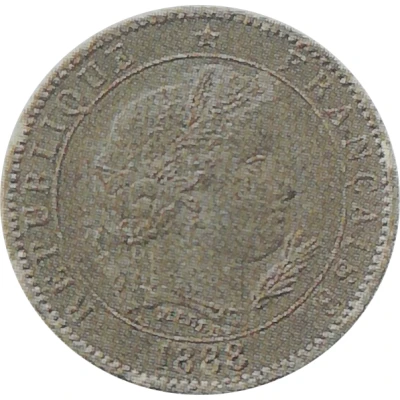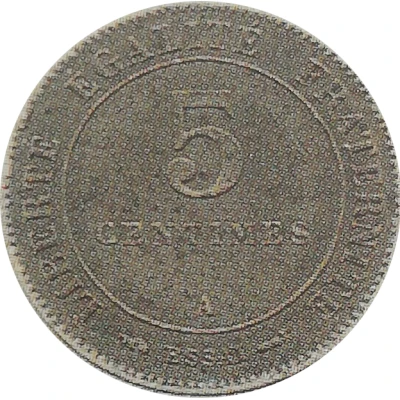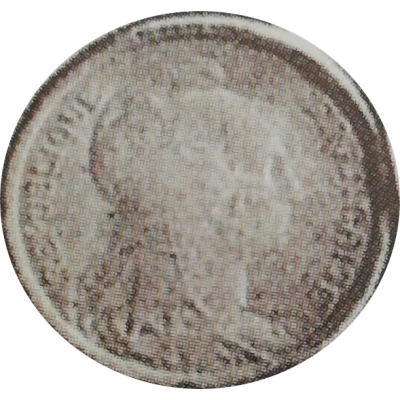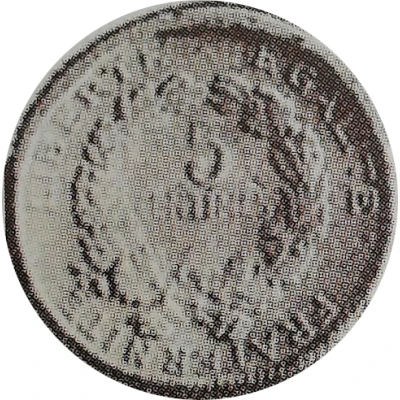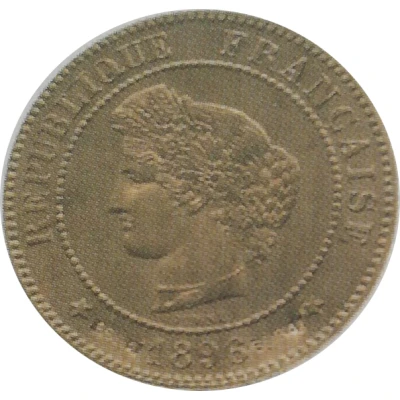
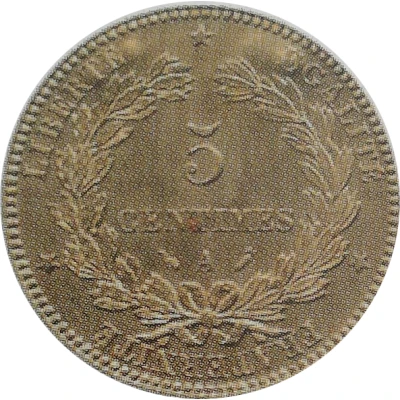

© Éditions V. Gadoury
5 Centimes Epreuve technique en bronze de Oudiné
1896 year| Bronze | 5.3 g | 25 mm |
| Issuer | France |
|---|---|
| Period | Third Republic (1870-1940) |
| Type | Pattern |
| Year | 1896 |
| Value | 5 Centimes (0.05) |
| Currency | Franc (1795-1959) |
| Composition | Bronze |
| Weight | 5.3 g |
| Diameter | 25 mm |
| Shape | Round |
| Technique | Milled |
| Orientation | Coin alignment ↑↓ |
| Demonetized | Yes |
| Updated | 2024-10-04 |
| Numista | N#198800 |
|---|---|
| Rarity index | 90% |
Reverse
Script: Latin
Lettering:
LIBERTE EGALITE FRATERNITE
5
CENTIMES
A
Engraver: Eugène-André Oudiné
Edge
Plain
Comment
Where to find the words ESSAI?As early as 1896, Daniel-Dupuis created his first sketch using Oudiné wedges in the effigy of Ceres. This technical study features the word "ESSAI" debossed on either side of the date on the obverse. The specially prepared blank weighs 5.3g (instead of 5g). This technique of using old coins was also used in 1964 by Raymond Joly for the creation of the new 10 francs Hercule.
Interesting fact
The Pattern 5 Centimes coin was designed by French sculptor and engraver, Jean-Camille Oudiné, and features a unique design that showcases a stylized allegory of the Republic, with a rooster standing on a pedestal, surrounded by olive branches and the motto "Liberté, Égalité, Fraternité" (Liberty, Equality, Fraternity) written in bold letters. This design was meant to symbolize the values of the French Republic and was intended to be used on a new series of coins, but it was ultimately never adopted for circulation. Instead, only a small number of pattern coins were struck in bronze, making them highly sought after by collectors today.
